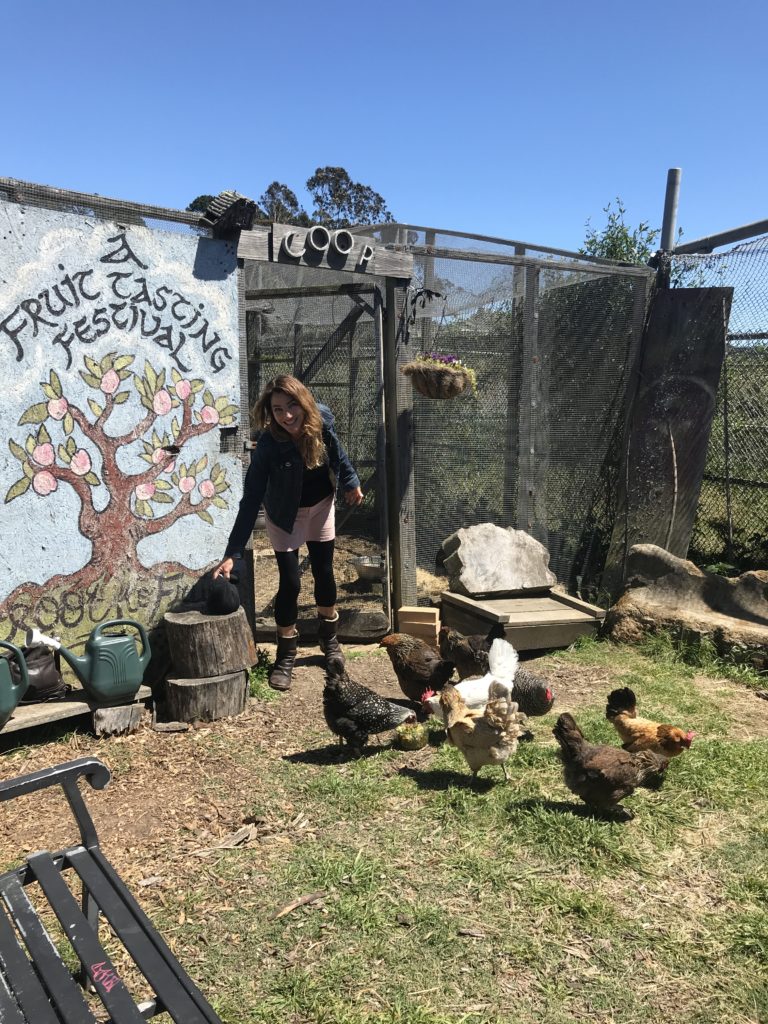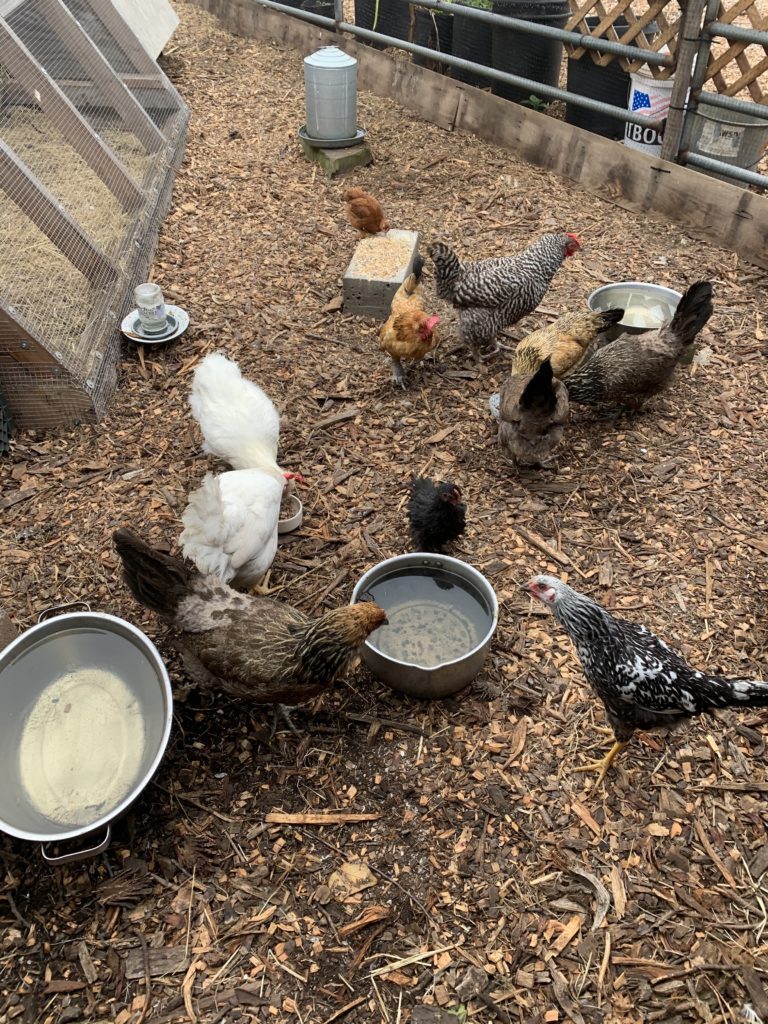
For nearly two decades atop Diamond Heights strollers have happened upon the ECOSF farm situated adjacent to the former McAteer High School football field.
Now housing the Ruth Asawa School of the Arts and the Academy of Arts and Sciences, the community farm continues performing as a magnet for walkers during the unprecedented 2020-21 COVID-19 lockdown.
As the Delta variant surges, people are even more attracted to the SFUSD urban farm. It’s also, sadly, become a magnet for vandals.
Over the past few months, many of the amenities of the pleasant space have been destroyed. A year ago the ECOSF non-profit boasted several metal benches where walkers could take respite. Sitting, they were surrounded by a greenhouse, a pizza oven, two beehives, a tiny house and variety of fruiting trees, shrubs and vines and a coop housing ten chickens.
Today, much of that is in ruins.
Every bench had been destroyed. In May, the chicken coop had been broken into and a hen attacked. She was later found dead. The coop was also attacked in July 2020, though at that time only the unanticipated and timely appearance of Congo Street’s Alan Pleaner saved the day. He was able to shepherd the chickens back into their pen and save them.
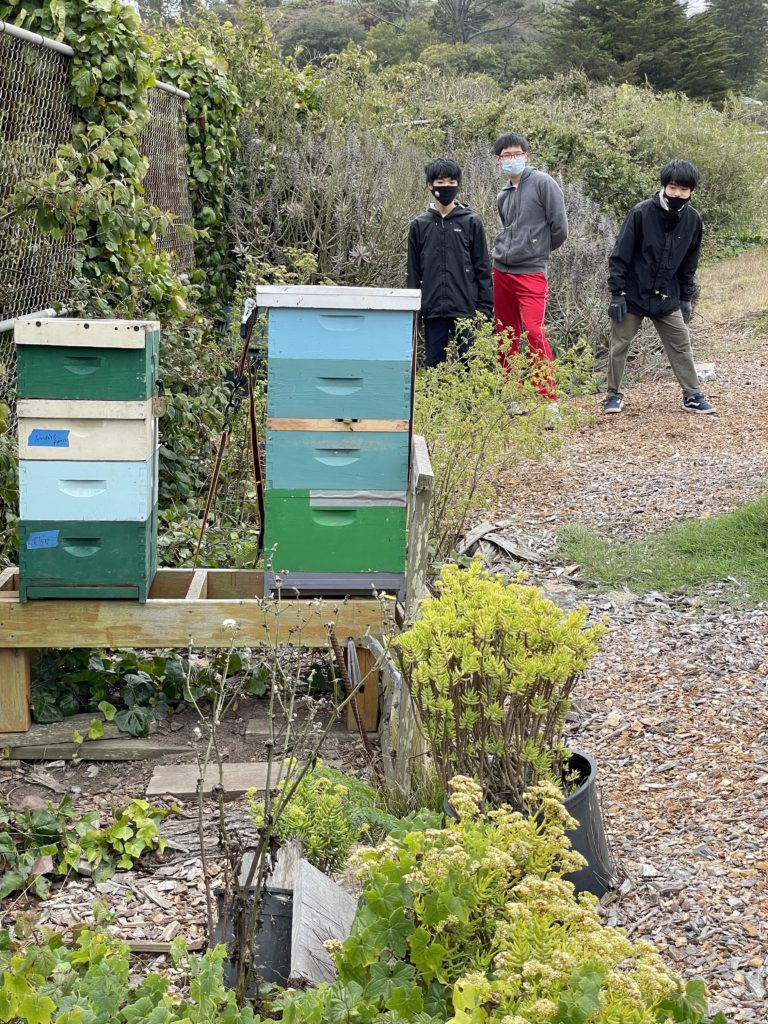
For their own safety they’ve now been relocated to the safety of ECOSF volunteer Tori Jacobs’ home. She’s been a fixture in the program since 2004.
Jacobs calls the hens her “girls,” and says they haven’t been as prolific since their introduction to their new digs that overlook the Pacific Ocean.
“They’re a little hesitant,” she said. “It’ll take time for them to bond with the five girls already there.”
Jacobs hopes that come September the hens will again fulfill a quota that allowed her pre-pandemic to sell dozens of eggs on a weekly basis after school at the campus O’Shaughnessy Boulevard parking lot.
Thankfully the trees and plants remain. The site features a bounty of fig, peach, apple, pear and lemon trees. Grapevines and blackberry thread their way among herbs such as mint, lavender, evening primrose and greens such as kale, mustard, rhubarb and cabbage. Ringing the perimeter of the grounds California native plants such as coyote bush, ceanothus and sage offer SOTA and Academy teachers fodder for a varied curriculum dealing with habitat friendly abundance.
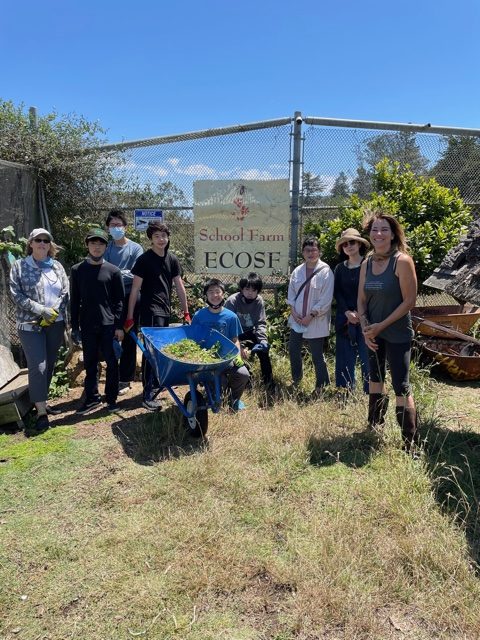
Young people stepping up
A group of five high schoolers, all friends in grade school at Rosa Parks Elementary School farm, have taken on work at the farm.
Recently 15-year-old Kai Tong spent a day cutting back notoriously spiky Himalayan blackberries and bagging debris.
“We came across the chickens,” Kai said, “and it is disappointing to see the chickens missing and even more disappointing to learn they were abused.”
Two brothers, Nao and Ayumu Funabashi, joined him. Like Kai, both are former Rosa Parks grade schoolers and both are 15 years old
Rosa Parks taught the boys a lot, said Tong’s mother, Midori Yenari.
“The school instilled healthy eating and gardening lessons and taught a rich science curriculum. But this farm is so much bigger and is a mechanism in an urban setting for demonstrating where our food comes from.”
Hiro Iida and Luka Seo were at the farm a week later. Hiro isn’t as interested in garnering community service hours as he is in getting back together with his friends and embracing fresh air.
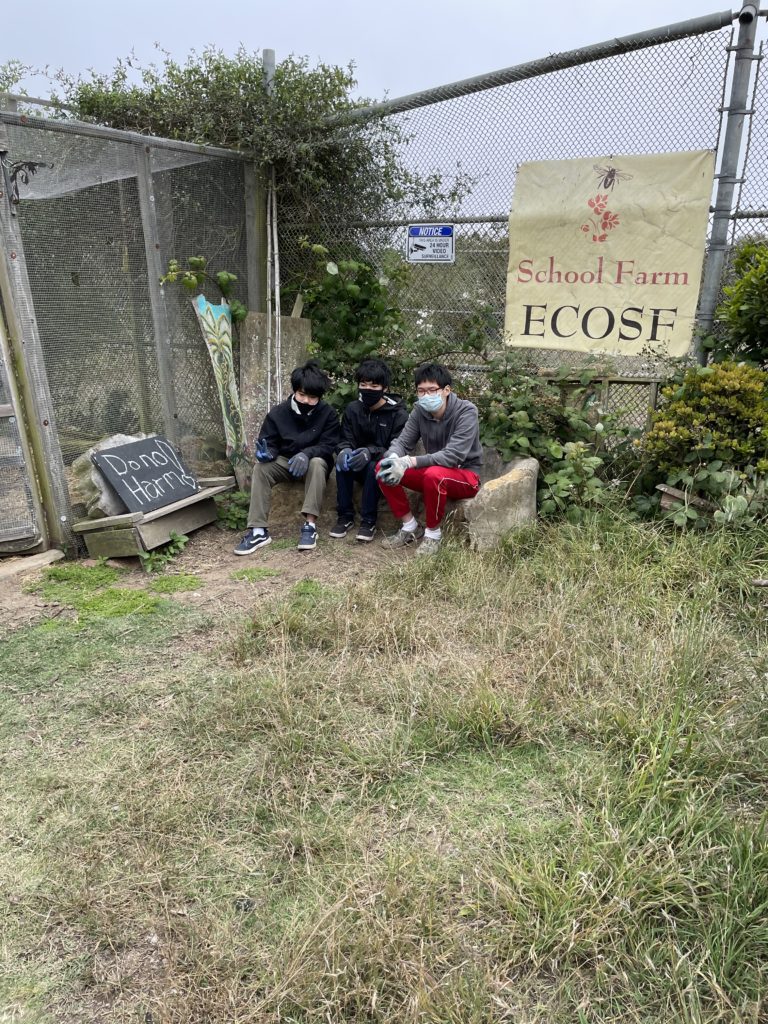
Yuko Yoshino, Hiro’s mother, emailed the Glen Park News writing that her 15-year old has enjoyed renewed in person time with his buddies and working toward a common goal since summer began.
“I wanted Hiro to volunteer because it was an opportunity to see his friends after 12 months of online school,” she wrote, “and to be outside, away from a computer screen and helping the community.”
The five boys are not the only high schoolers who tend the site.
Every year the SOTA Environmental Club organizes a large volunteer work day on the farm for Earth Day, said Tori Jacobs.
“Each year I put kids to work cutting back wild raspberry vines and spreading fresh wood chips along farm row paths.”
When school resumes the ECOSF farm will pivot to what were pre-pandemic hours. Then it will resume a second Saturday of every month noon-2 p.m. volunteer schedule.
Kai was there for the bugs. With a goal of studying entomology at college, Kai swept his arm around the expansive farm garden, keeping an eye on and a respectful distance from the honey bees patrolling their stacked boxes.
“The Hercules beetle,” he agreed, with adolescent curiosity and a surfeit of encyclopedic knowledge. “It’s strong and big and my favorite.”
